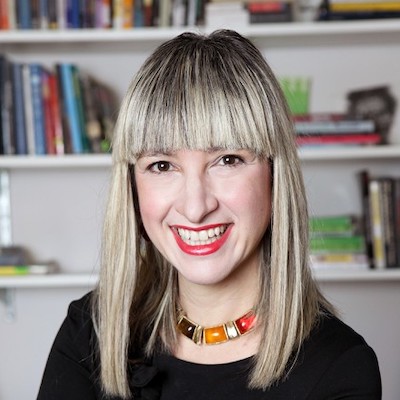ภาพโปสเตอร์ The Truth is Out There จาก The X-Files
เว็บไซต์สายวงการสื่อที่ตามอ่านอยู่เรื่อยๆ คือ Nieman Labs ซึ่งมาจากมูลนิธิด้านสื่อมวลชนคือ Nieman Foundation for Journalism ของ Harvard
ช่วงปลายปี 2020 Nieman Labs เชิญนักคิด-อาจารย์ด้านสื่อ มามองเทรนด์ภาพรวมของปี 2020 สะท้อนทิศทางปี 2021 มีหลายบทความที่น่าสนใจ (เยอะเกินอ่านไม่ทัน)
บทความที่ได้อ่านแล้วคิดว่ามีแง่คิดน่าเขียนถึงคือ The year we rebuild the infrastructure of truth ของ Zizi Papacharissi อาจารย์จาก University of Illinois
ก่อนอื่นต้องเอ่ยถึงบริบทวงการสื่อในสหรัฐยุค Trump ที่เรียกกันว่า Post-Truth เพราะเต็มไปด้วย fake news และแกนหลักในการผลักดันมาจากตัวประธานาธิบดีเอง เมื่อบวกกับฐานเสียงของ Trump ที่มีจำนวนมหาศาล ช่วงปีแรกๆ จึงทำให้วงการสื่อต้องตั้งรับการโจมตีของ Trump ที่บิดเบือน “ความจริง” ในแบบฉบับดั้งเดิม
The past few years have been tough for journalists. Trained to report objectively on the truth, they have been forced to also defend it.
ความจริง (truth) คืออะไร ถ้านิยามแบบปรัชญาหน่อยก็คือ สิ่งที่สังคมเห็นร่วมกัน และมีความเป็นเจ้าของ (belonging) ความจริงนั้นด้วย โดยความจริงไม่ได้เป็นแค่การนำข้อเท็จจริง (fact) มามัดรวมกัน
Every society has its own mechanisms for establishing, reproducing, and accepting its own truths. This is how societies form, organize, and co-exist — around shared understandings of what truth is. Truth is more than a collection of facts; it’s a mechanism for belonging.
เมื่อสังคมแตกแยกทางความคิด มีชุดของ “ความจริง” ที่แตกต่างกัน สังคมจึงแบ่งแยกออกเป็นฝ่ายเขาและฝ่ายเรา
We become polarized when this understanding of truth is not shared by all who make up a society. We then fall back into what social scientists call in and out groups to affirm our identity. In plain terms, we find comfort in “us vs. them” ways of understanding the world.
สื่อมวลชนตามวิชาชีพแบบเดิม (คือเรียนมาในสถาบันที่สอนวิชาสื่อ) ถูกสอนมาเรื่องการรายงาน “ความจริง” โดยไม่เอียงข้าง สามารถตรวจสอบได้ นั่นคือ รายงานให้เที่ยงตรง แม่นยำ รอบด้าน แต่สื่อไม่ได้ถูกสอนมาเรื่องการสร้างความจริง หรือ การมาเถียงว่าอะไรจริงไม่จริง
Defending the truth has never been primarily the job of journalists.
ซึ่งนั่นเป็นหน้าที่ของวิทยาศาสตร์!
Science is equipped to find, understand, and defend the truth. Scientists are taught to check their own bias in researching the truth. When there are many different truths to be shared and researched, scientists have methods of identifying what they all mean. This is what science does. Science is trained to defend the truth.
Journalists, by contrast, are trained to find the truth. Scientists need the help of journalists to tell truths to the general public. When the link between journalism and science is broken, trust in a society’s truth-telling mechanisms is broken.
ผู้เขียนเสนอว่า เมื่อหน้าที่ของสื่อต้องมารักษา “ความจริง” ก็จำเป็นต้องอาศัยพลัง หรือ กระบวนการของวิทยาศาสตร์เข้ามาช่วย เพื่อสร้าง “โครงสร้างพื้นฐานของความจริง” (the infrastructure of truth) ขึ้นมาใหม่
The past few years have put journalists in the awkward position of defending truths long articulated by science.
Journalists, editors, and decision makers must involve scientists in their processes of storytelling.
ในอีกด้าน การรวมพลังของสื่อ (สหรัฐ) ก็เริ่มได้ผล เมื่อบวกกับ Trump แพ้เลือกตั้ง ศูนย์กลางของความปลอมก็หายไป ทำให้ fake news จะค่อยๆ ลดพลังลงไป แม้จะไม่มีวันหมดไปก็ตาม
The next few years will undoubtedly be met with massive efforts to rebuild the infrastructure of truth in the U.S. This will happen; it is a natural and inevitable reaction. Fake news will not dominate our infoscapes forever. It won’t go away completely, but it will become more marginal, because there’s been a change in the leaders we have elected to power.

